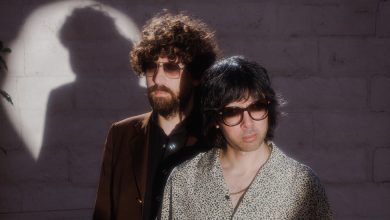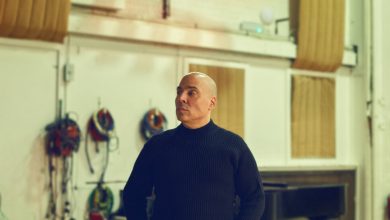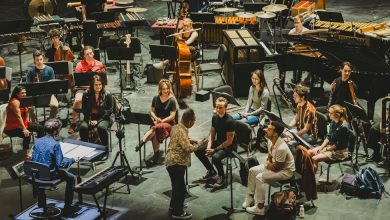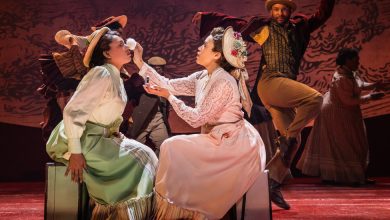Faith Ringgold Mural at Rikers Island to Move to Brooklyn Museum

In 2019, the painter Faith Ringgold traveled to Rikers Island so that she could see how her first public art commission, a 1972 mural called “For the Women’s House,” was faring. Not so good, she decided, and the artist, who is 91, continued to quietly wage her campaign to see her work, which hung in a forlorn hallway behind plexiglass where few could see it, relocated to the Brooklyn Museum.
On Tuesday, city officials granted her request. The Public Design Commission agreed to a long-term loan of the vibrant work from the Department of Corrections to themuseum. It followed a request by Mayor Bill de Blasio, in the final days of his administration, that the mural be lent to the cultural institution.
“I feel that there has been a careful effort to ensure that this is being placed and loaned to an institution that already acknowledges the great work of this artist,” said Signe Nielsen, president of the design commission. “We are all going to breathe better knowing this piece is in an accessible location.”
“That’s absolutely wonderful,” Ringgold said in a phone interview. “Nobody could see it before.”
One of the most influential living American artists, known for her “story quilts” and her ardent activism, Ringgold had received a $3,000 grant from the city in 1971 for her mural, which she based on conversations with inmates at the Correctional Institution for Women on Rikers Island. It depicts women in careers that inmates thought were outside their reach: president, construction worker, minister, professional basketball player and others.(A year earlier, Ringgold herself had been jailed for a short time, arrested and charged with desecrating the American flag at an art show she helped curate at the Judson Church in Greenwich Village.)
When the Rikers facility began housing men in 1988, Ringgold’s painting became a target of attacks and it was whitewashed before a corrections officer stepped in to save it. The piece was restored and relocated to a new women’s facility called the Rose M. Singer Center, which, like the rest of Rikers Island, is scheduled to close permanently by 2027. Nearly a decade ago, the painting was hanging in the gym, high above the basketball hoops and behind a layer of plexiglass. More recently, it was placed in a long hallway at the facility.
Understand the Crisis at Rikers Island
Amid the pandemic and a staffing emergency, New York City’s main jail complex has been embroiled in a continuing crisis.
- What to Know: Rikers has long been characterized by dysfunction and violence, but recently the situation has spun out of control.
- Inside Rikers: With staffing shortages and the basic functions of the jail disrupted, detainees had free rein inside the complex.
- ‘Fight Night’: Videos obtained by The Times reveal scenes of violence as the city struggles to restore order in the jail complex.
- Decades of Dysfunction: For years, city officials have presided over shortcuts and blunders that have led to chaos at Rikers.
“The Brooklyn Museum is thrilled to have one of Faith Ringgold’s most iconic paintings return to our care,” Anne Pasternak, director of the Brooklyn Museum, said in a statement. “We are excited to share it with millions of people locally and around the globe and engage them in dialogues about this groundbreaking artist’s work and themes of mass incarceration.”
In 2017, Ringgold’s mural was displayed for the museum’s landmark exhibition, “We Wanted a Revolution: Black Radical Women, 1965-85,” exploring the achievements of Black female artists, before touring the country with the show. Ringgold said she has tried for nearly a decade to move the painting, failing to strike a deal with at least one university because of the cost of the insurance for the artwork.
What sealed the deal with the Brooklyn Museum, Ringgold said, was the influence of the philanthropist Agnes Gund, whose nonprofit organization, the Art for Justice Fund, has offered to back the creation of a new community mural to replace the artist’s work at Rikers.
On Tuesday, the Brooklyn Museum said that once the loan is finalized, it would send the mural to the New Museum, which opens its major survey, “Faith Ringgold: American People,” on Feb. 17, so the work can be seen by the public.
But not everyone is celebrating the plan. Some art historians and preservationists criticized the decision to send the work to a private institution as evidence that the city cannot care for its own art collection.
“It troubles me that the city is embarking on this kind of enterprise again,” said Michele H. Bogart, an art historian specializing in the city’s public works. “And I just keep wondering whether they are doing a disservice to the people who are still in Rikers.”
Over the last decade, several public artworks and monuments have been relocated inside private institutions. In November, for example, the city moved its Thomas Jefferson statue to the New-York Historical Society after many City Council members objected to Jefferson’s legacy as an enslaver.



